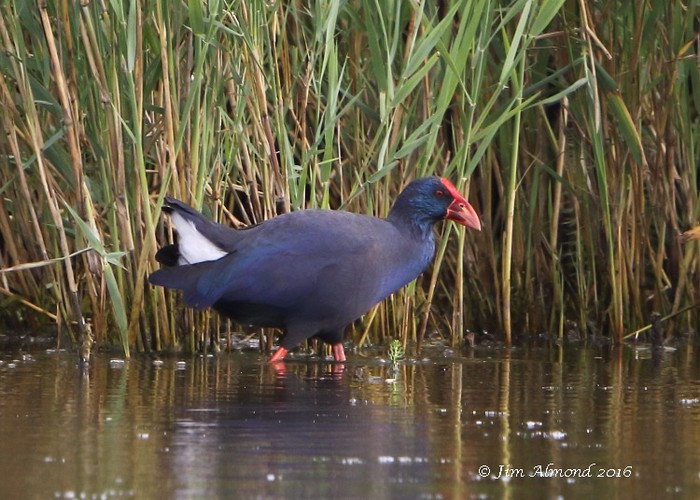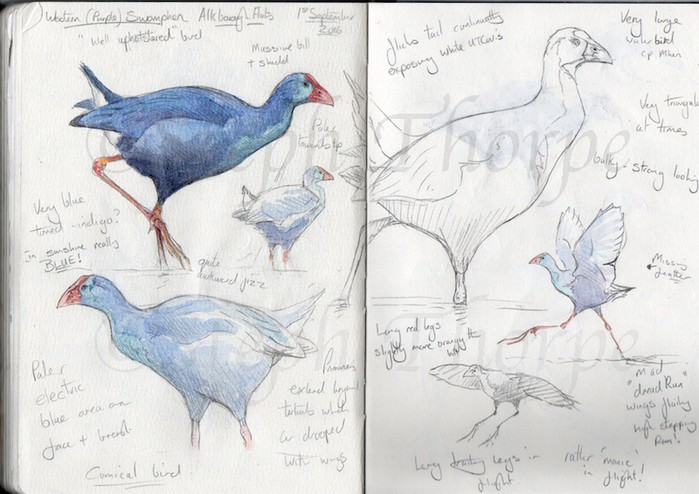Western Purple Swamphen added to the British List
The British Ornithologists’ Union Records Committee (BOURC) has accepted Western Purple Swamphen Porphyrio porphyrio following to the British List.
This individual was first found at Minsmere RSPB reserve, Suffolk on 31 July and remained there until 5 August, before being relocated in Lincolnshire on 30 August where it lingered until 4 January 2017.

Swamphens have been observed in Britain previously, but these records have involved either known escapes or other/uncertain taxa, and so placed in Category E.
In contrast, the Minsmere bird appeared at a time when increasing numbers of Purple Swamphens have been located in northwest continental Europe, including northern France. The increase in extralimital records is due to a recent expansion of some populations, possibly stimulated and/or assisted by several reintroduction schemes in southern Spain, coupled with the creation and protection of suitable wetland breeding habitat. This first British record accords with an emerging pattern of vagrancy for the species.

Purple Swamphen should be placed after Sora Porzana Carolina on the British List.
Further details of this decision will be published as part of the BOURC’s 48th report expected to be published in Ibis in January 2018. Upon publication of these decisions, the British List stands at 610 species (Category A = 592; Category B = 8; Category C = 10).
29 Augsut 2017
Share this story






